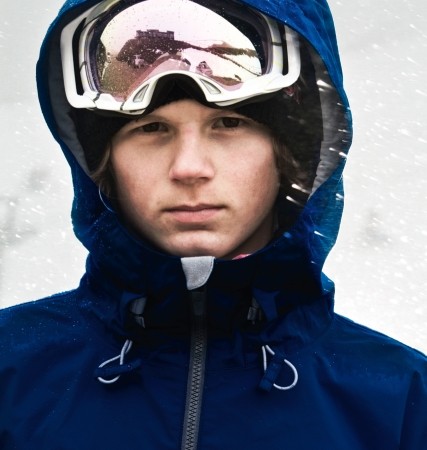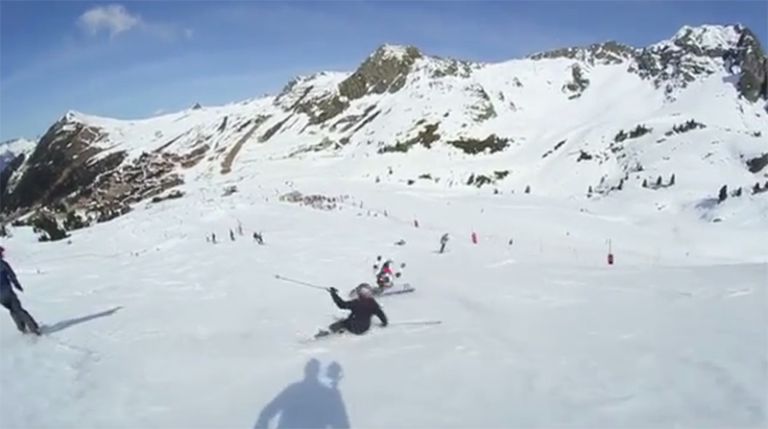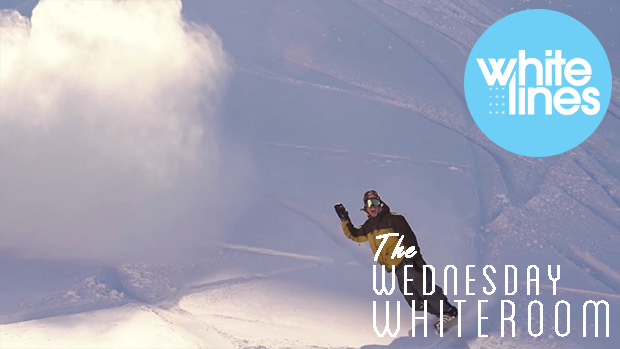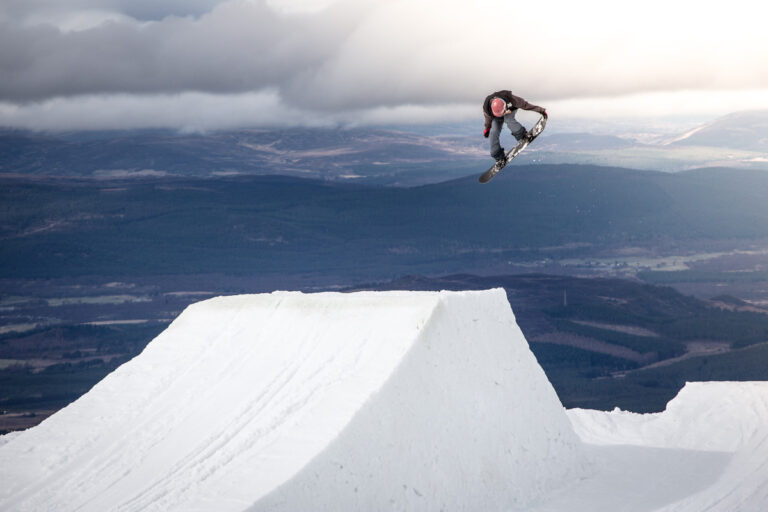
The judging at last month’s Olympic slopestyle competition inevitably caused some controversy. As with any judged sport there were those who felt the outcome was unfair and they weren’t afraid to take to social media to let their feelings known. There were rants about individual decisions, about the FIS and about the games as a whole. But there were also others (including us here at Whitelines) who thought the judges had largely got it right.
We’d wanted to talk to the people at the centre of all this, the judges themselves, ever since the first qualifying results came in. During the games however they (probably quite rightly) kept a dignified silence, refusing all media requests. But finally last week, we managed to secure an interview with one of them.
Iztok Sumatic the Slovenian judge was an absolute dude and as far from the stereotype of the “evil FIS ski judge” as you could possibly be. He was also more than happy to share his thoughts about the contest, the judging system and what exactly was going on while we all waited for Jenny’s score…
Scroll to the bottom of this article to read the criteria used to judge the Olympic slopestyle contest.
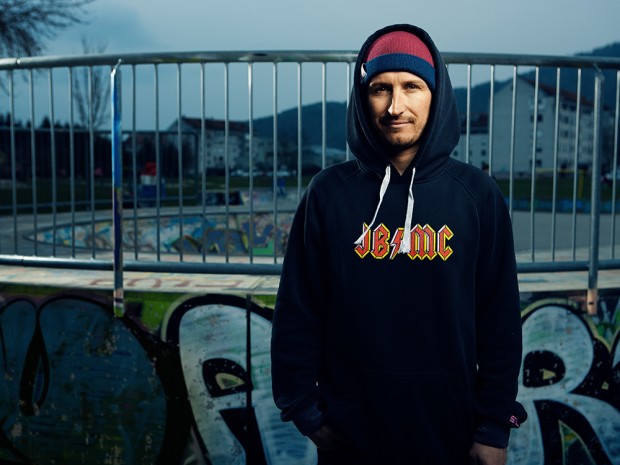
Can you tell me a little bit about your snowboarding background?
Yeah of course! I started snowboarding in 1992. Well, I started skating first in 1989 and that was my passion. Then I figured out I could go riding during the winter too. So this is how me and a bunch of my friends started snowboarding and we were kind of the pioneers in my area. I was never a pro – financial issues kept me from riding in Austria, which is where the contests were – but I did a couple of local events. I never really enjoyed contests that much though, I more loved to just ride with my friends and push my limits like that.
How did you get into judging?
Well I used to judge skateboard events back in the day. Then I was working in snowboarding as an instructor and a coach. And then one of my friends from my hometown, who was the president of our snowboarding association at the time said “there’s a judging clinic in Kaprun, we could pay for you to go.” This was about 10 years ago. I did some local contests, then Europa Cups, then the breakthrough was when I was called to judge the World Junior Championships in I think 2005. Ever since that I was asked to do the big contests, World Cups and World Championships and stuff. At the same time I’ve also done a lot of TTR events. Like the Nanshan Open in China, that was my first one, and then I’ve done the Dew Tour and stuff as well.
What training do judges get given? Was there any special training for the Olympics?
Well every two years you need to attend a judges clinic to maintain your license. But I try to go every year because it keeps you in the loop. You talk to people, see what’s up. For the Games, there’s a judges working group made up of experienced judges from strong countries like the US, Japan and stuff. They picked me to be one of the judges at the Olympics.
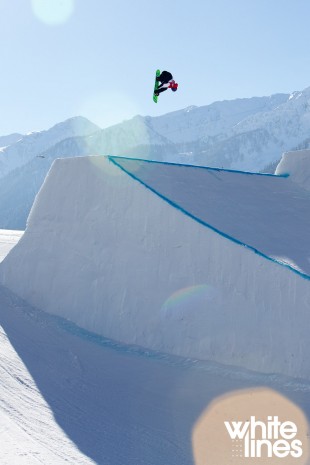
Why do you think they picked you?
Well I guess they thought I was good maybe? [laughs] No, they’re all really experienced and they know that I’m involved in snowboarding like I spend maybe 150 days a year on snow, whether that’s coaching or judging or filming – I do a bit of that as well – so I guess they just decided I’d be good for the Olympics.
Do a lot of people judge TTR and FIS, and is the training and judging very different?
I went to a TTR judging clinic this year and I must say it’s pretty much the same. It’s the same approach; you have the same debates and discussions on the tricks and what to look for. There is a slight difference in the TTR criteria and the FIS criteria, in TTR you talk more about “style” and in FIS you talk about “execution” of the trick. But actually that’s almost the same thing. Some say that style is dangerous because it’s subjective and hard to define, so maybe execution is more of a firm thing. But how long you hold your grab, if you tweak your board, that all counts as what FIS call good execution. But that’s also style. So the difference is basically just the language.
In TTR you talk more about “style” and in FIS you talk about “execution” of the trick. But actually that’s almost the same thing. The difference is just the language.
It struck me watching the Olympic judging that clean tricks were being rewarded more than it might be at say the X Games, where you can score highly with sketchy tricks (Torstein’s first ever “triple” for example). Was that something you were conscious of?
More or less. I mean at the end of the day every judge ranks a rider according to a mixture of the judging criteria. So that’s execution, amplitude, difficulty and then variety, progression, risk and it’s a combo of these criteria that you have in mind. And you put down the score according to that. At the Olympics the top 6 riders – I think the 6th was Jamie right? – anyway, the top 6 all performed super good, super clean. I mean there was a hand touch on Sage’s run, but it was a small hand touch. But in general everything was super sick, super high standard, but obviously you have to rank those 6 runs. So it’s the mixture of the criteria that you have to rely on to make the ranking.
So Jamie’s run, he looked slightly disappointed to get an 85 or whatever it was. What was he marked down for?
I think his rails were pretty clean and he was one of the most tech riders on the rails along with Mark. And then he went for cab 14, switch back 9 and backside 14 triple, I thought that was sick. But it was that switch back 9 he did, that was pretty much it. Like I said though the top 6 runs it was so hard! Honestly if I could, I would have just grabbed six gold medals and given them out and said “you guys deserve this!” But at the end of the day you have to have a winner, a second place, a third place so…

It struck some people that flat spins were rewarded higher than they have been at other comps. Was that something that was discussed at all?
No we don’t discuss or agree on anything like that, each judge just gives their overall impression score. We don’t talk to each other. Sometimes there is a split panel, sometimes different judges see things differently, they’ll pay more attention to other criteria than other judges. Like I think there were some people who had third place different. But everyone had Sage in first. We were all just impressed with what he did, he stepped it up and did that back 16 with a japan, which was sick, I’d never seen that trick before.
Does he get a higher score for doing something like that that’d never been done before?
Well I can’t say what the other judges saw but from my perspective, the guy was just rad you know? The difficulty of all his tricks was really high, he did like a cab 1 to 540 out which is pretty technical and no-one was really doing that. Then he did the gnarly combo of cab 12 holy crail, then an off the toes front 10 rocket air and then at the end he did a back 16. So from my perspective it was like his tricks were difficult, they were executed pretty well, and the amplitude was super-big and he was just progressive. Different variations, different grabs, so that’s the variety and progression taken care of too. That’s what you want to see, someone mixing it up. You can put scores on different elements like that but in the end my explanation would simply be he was just rad! I mean yes the top 6 riders were all doing difficult tricks and going big but I saw a lot of mute grabs, there were triple underflip mute grabs. But Sage and Stale as well did something different. Stale’s 14 with an indy nosebone held all the way to the end that was rad too.
Honestly if I could, I would have just grabbed six gold medals, given them out to the top 6 guys and said “you guys deserve this!”
It’s interesting that all six scoring judges had Sage in first.
Yeah, everybody was just like “what the hell?!” I mean there will always be someone who will say like “Mark McMorris deserved to win” or “somebody else deserved to win” that’s always the way in judged sport. But with Sage’s run, I deducted just one point. There’s a deduction scale in FIS judging from 1 to 5 and you can see Sage’s hand touching the snow. But if someone does a back 16 with a tweaked japan and they stomp it? You could see he stomped it, he barely touched the snow, he didn’t hold himself for balance he just had a tiny bit of over-rotation in his upper body. So I just deducted one point for that. I’ve watched the runs all back and at the end of the day, I think we did a good job. I stand by my score for Sage 100 per cent.
So do judges talk after the events or before the events?
Yeah of course. We don’t influence each other, we don’t want to influence each other with our scoring because that’s not professional and that’s why you sometimes see scores can vary. Sometimes I have the highest score, sometimes I’ll have the lowest score. And they get discounted.
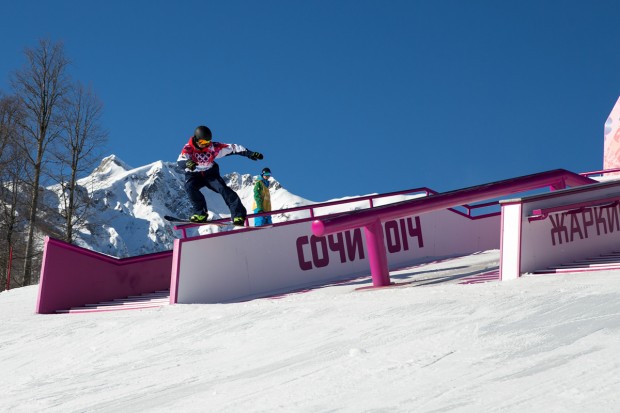
There are 6 scoring judges and then a head judge, what does he do?
He doesn’t score at all, he basically runs the event. He’s more of a technical kind of person, he’s trying to keep a good flow to the event, to get us to put in our scores in time and he’s in touch with the starter and in touch with the race director. He’s more of communication guy. He’s in charge of keeping the rhythm. He’s also in touch with the coaches to tell them what we are looking for in case of protests.
He’s the guy who has a meeting with the coaches and riders after the event?
Yeah. Normally I like to come with him to that, I take my memory board and help him out with the arguments and explain why someone has been scored like that.
Do you have a meeting before as well?
Yeah we have a meeting and you talk to them and tell you what you’re looking for. But because it’s an overall impression it’s hard to explain particular things. The best way is to say “OK, you know the criteria, so your score will be a mixture of your tricks judged according to these criteria.”
Actually there was a split panel for third place. Some of the panel had Sarka better, some had Jenny better, some had Sina – who did the first front 10 ever – as better.
With Jenny’s run, she was debating trying the 900, but in the end decided to do the same run but cleaner. She told us one of the things that influenced that decision was how the judges were scoring the men’s. Would that be different at a different competition?
Well she made the right decision, but actually there was a split panel for third place. Some of the panel had Sarka better, some had Jenny better, some had Sina – who did the first front 10 ever – as better. But from my perspective, I really wanted to see the ladies hitting the rails. And the top 3 ladies were the ladies who hit the rails, not the boxes. In practise I’d seen some of the ladies hitting the rails and coming off early, but Jenny was one of the ones who was hitting the rails properly. On the up rail she did a 50-50 180 out and then she did a switch boardslide and she really locked in and I kind of rewarded that. Other judges had it different, but then this is why it’s good to have different opinions.
Do you watch slow motion replays before you put your scores down?
No it’s kind of hard to do that because you have to put your scores down quickly. We would love to see the replays but you could keep just watching and watching and watching and you have to put a score down. It’s possible that it’s something that will be discussed, but at such a high level of competition you need to keep the thing running. So you can’t really watch the replays properly.

You all submit your scores to the head judge and then you lose the top score and the bottom score right? Why’s that?
Yeah. Because even though it’s all to criteria at the end of the day it’s a subjective opinion but if the highest and lowest scores drop out then you get an objective score at the end. As one very experienced Canadian judge said once: “It’s like the wisdom of the crowd”. So everyone has their own way of seeing a run but at the end of the day if you lose the highest and the lowest you get the fairest score, it’s a good thing.
It’s kind of like a democracy I guess?
Yeah exactly, it’s a democracy.
When there’s a massive wait like for Jenny’s run, what’s happening there? Is there any debate between the judges going on?
Well yeah sometimes when there’s a very tight decision, the head judge will leave you a little bit more time so you can compare the runs. So you have your memory board, where you put down all the tricks, all plusses and minuses and stars and smileys and whatever you put down, and you look back at that and compare the runs. And you’re thinking “argh how can I score this?” Some people can do that very quickly and some people take a bit more time. I think actually on Jenny’s run the judges were actually quite fast with the scores, but then there was a logistical issues with the TV as well. But yeah when there’s a tight call it can take more time. I thought there was a tight call between Sage and Stale, so that took more time too.
When there’s a tight call it can take more time. Though I think actually on Jenny’s run the judges were actually quite fast, but then there was a logistical issues with the TV as well.
So you use your own notation to mark what tricks people do? On pen and paper?
Yeah everybody has their own way. I put a lot of shit on my memory board. So let’s say there’s a backside triple I put like a B, a 3 and 14. It’s a mess, your memory board is a mess. Only I can really read it. And then afterwards you put like a smiley or stars or you write “boom” something that keeps you focussed on that sick run so when you see the other runs you go back to that and compare it.
It always strikes me it’s hard to be the first rider to drop because it seems it’s hard for judges to set a benchmark. Is that true?
Well it can be hard to set the ranking sure. This year I judged Dew Tour, I judged the Grand Prix, I was head judge at the Nanshan Open and I watched the X Games, I was really trying to be as prepared as possible for what we would see. But then the Olympics came and we were judging the qualis and the standard was already sick. I gave like 98 to Stale in his first run! These guys were just stepping up the game, and then the semis and then the finals were even better and even better. So we did lower the rankings for each round but it doesn’t mean we’re not rewarding these guys it’s just that you can’t keep going because you would end up giving scores of 150 to the guys. I mean everyone was doing 14s, there were several riders doing 16s – Billy Morgan was one of them, he didn’t do a clean run but he stomped the 16 – and Stale was doing back-to-back 14s! At X Games there were maybe two or three guys doing that kind of stuff. But at the Olympics there were 12 guys doing that.
Do you find it’s a thankless task being a judge?
Yeah, it always is. The only rider and the only coach who’s going to be happy are the guys who won. So yeah it is tough. It’s a judged sport and everyone has his or her own opinion. I heard a lot of bad comments and negative comments about the judging. But I heard a lot of positive ones too. I was pleased to hear some people who are important in snowboarding saying: “yes, the Olympic judges did a good job.” But that wouldn’t change my mind if they didn’t. I know what’s going on in snowboarding, I’ve been involved in snowboarding for 20 years, I know what’s good and what I want to see. And in the end though the debates and all the comments are actually good for our sport too.
As a Brit I have to ask, if Billy had landed his run – cab triple underflip, backside double 10, backside triple 16 – would that have got him on the podium?
Well, let me put it this way. He would definitely be in the top 7 riders, and fighting for the podium. He was super-tech on rails, he was one of the most technical on the top section but at the end of the day I can’t really say. If we’d seen that run, then we could evaluate it but we didn’t. And of course I’m just one of six judges. But I can say this: He would definitely be in contention and it would have made our job way more difficult! [laughs].

Who were your fellow judges?
There’s Phoebe Mills from the US, who’s also been involved in snowboarding for a long time she’s the manager of Woodward in Tahoe now, and helped set up Woodward in Copper. She’s a very cool girl and she also won a bronze in the Olympics in Seoul in 1988 for gymnastics. But she’s a snowboarder, she’s been snowboarding forever. Then there’s Guido Van Meel from Switzerland he’s been snowboarding for a long time and has been judging for eternity, Ola Sundquist from Sweden, Klara Suchanova from the Czech Republic, Kyoji Yokoyama from Japan and Brandon Wong from Canada as the head judge. I think Brandon said at the meeting that the judges between us had 120 years of judging experience. Everybody comes from different backgrounds in snowboarding, from different parts of the world and it’s good to have those different perspectives. But the one thing we all had in common was we were all core snowboarders.
That’s interesting because people talk a lot about FIS judges not knowing their stuff…
Yeah I know, people talk a lot of shit, we hear that. I guess that’s just the way it goes. But you know who I really wouldn’t be? A soccer referee! That would be harder. But yeah it was a tough experience but it was a good one, I feel happy with the job we did and I feel happy to have done it. It’s interesting even some of the “Fuck FIS” guys that I know were saying, “you did a good job.” One of my close friends sent me a message saying, “dude, you know I hate all that stuff, but you guys did a good job.” That kind of felt good – someone who hates FIS said we did a good job. At the end of the day all the judges, we’re snowboarders and we’re just down for the sport.
It’s interesting even some of the “Fuck FIS” guys that I know were saying, “you did a good job.”
What’s your take on the whole FIS thing?
Everybody has his or her own opinions. Of course for me it’s very important that snowboarding is not just a sport, it’s a lifestyle, it’s a philosophy that existed before slopestyle became an Olympic sport. So now it’s going this way and it is an Olympic sport, we need to be involved to find a way to protect that spirit. I’m a judge, I judge TTR stuff, I judge FIS stuff, but in the end I’m just down for snowboarding. I want to do something good for the sport and good for the community.
I actually think the same way. Now it’s in the Olympics, it’s better that snowboarders engage with FIS to make it as good as we can.
Yeah. And as a small nation, like Slovenia or even for you guys in the UK it’s a really good thing. In Slovenia if you get good scores and good results at the Olympics or the FIS World Cup events the ministry of sports gives money for that which helps grow our sport. It’s the only way to get that money. Slovenia is a small country, it’s not a big market for snowboards so there isn’t money from sponsors to hold big events. I would love to have big events supported by the snowboard industry but we can’t because there’s not enough money. We’re only a country of two million people you know? The economy is not big enough. So how do we progress our sport? How do we grow our sport? This is the only way we can do this.
Yeah in the UK Jenny’s medal has had a massive effect with interest increasing and the sport growing. It’s great!
Yeah I heard, I have a friend who lives in London and he was like “everybody know what a triple cork is now!” Like dudes who go to watch a Manchester United game now know what a triple cork is. Can you tell a better story about the effect of the Olympics? And if you want to be core, you can still be core. I mean I’m a core snowboarder, I know where I come from and I see snowboarding as a way to express individuality still.
At the end of the day the Olympics isn’t going to stop Jeremy Jones from split-boarding up a mountain, or Keegan Valaika from filming in the streets.
Exactly. Exactly.
Thanks Iztok!
Thank you!
Scroll down to read the criteria Iztok and his fellow judges used to judge the Olympic slopestyle contest.

Sochi 2014 Olympic Judging Critera Slopestyle
Overall Impression (3 – 5 Judges counting scores)
All judges will score the run by evaluating the run from start to finish with an overall
precision. The judges evaluate the precise nature of the run in relation to maneuvers
attempted, both individually and as a sequence. The overall composition of the run is
very important as the judges evaluate the sequences of tricks, the amount of risk in
the routine, and how the rider uses the course. The judges take falls, mistakes and
stops into consideration and can deduct up to 20 % of the points of the run/judge for
each fall/stop. (See deduction scale: 3007.4)
Judges must have a good trick knowledge. Without understanding the trick, it must
be very hard to finalize a result.
When judging Overall Impression a judge must consider, in no particular order the
following criteria:
Amplitude:
For Slopestyle, amplitude is not just going “BIG” on the kickers but landing the tricks
on kickers at the decided “sweet spot”. To have too much or too little amplitude on
kickers is dangerous and must also be considered by the judges. Showing good
amplitude on kickers is by “popping” of the kicker and having a good trajectory in the
air, not too flat. Exception is if you buttering of the kicker on purpose.
Greater amplitude increases the risk of the trick.
Difficulty:
Difficulty is affected by more than just the number of rotations performed. The judges
will also consider the following:
-Switch take offs or landings
-Frontside or Backside rotations
-Take offs, on heel or toe
-Different grabs
-Blind landings
-Big or small kickers
-Hard combinations and the sequence of tricks
-Different rotation axis (Longitudinal/Lateral Axis, Vertical Axis)
-How to get: on or off the rails? Easy or Hard way, Nr of Rotations, Easy boxes or
hard kink rails,
Performing grabs, boning or tweaking a trick can affect the difficulty of that trick. For
example where a rider grabs the board and with which hand can have a significant
impact on the difficulty of a rotation.
Execution:
Control should be maintained throughout the whole run. . The riding should be
performed with stability and fluidity. Each individual trick should be performed with full
control. An athlete should reach and hold the position chosen to demonstrate that
this is the position he/she wants to execute.
In rotations flips and different hybrids, the rotation should be done in one manoeuvre
and control should be held, demonstrated in one unique movement with an equal
rotational rhythm from beginning to the end. “The trick should look easy”.
If the intention is to grab, the grab should be made on the board and not anywhere
else. (boot grab, Binding grabs etc…)
Preformed grab/grabs are very important in all kind of manoeuvres and a missed or
weak grab will influence the judges score radical. Approaching a rail from the side is
considered better execution than approaching from a straight direction. The athlete
should be balanced and locked on until the end of the rail.
Variety:
Variety is a key factor in an athlete’s run.
Mixing different tricks into a good run. Spinning different ways:
Backside/ Frontside, Left/Right, Longitudinal/Lateral Axis, Take offs and landings
should be a mix of switch and normal. Grabbing the board with different grabs on
different spins.
Progression:
By rewarding progression we help to push the sport forward.
Introducing new tricks that have not been performed before
Combinations/Flow:
Combination has a close overlap with Variety, to have good hard trick combinations
between all different features in the slopestyle. The composition of the tricks must fit
to be able to use the course in a proper manner. When the course allows different
lines, the selection off the lines are essential. The chosen line should be fluent.
Creativity will be awarded.
Consideration:
For a judge to “know” how difficult tricks and combos are, judges need to have
communication with athletes and coaches to hear their opinions. However, these
matters should be discussed with coaches at official coaches meetings during the
season and not at each competition. Difficulty is a very individual thing and athletes,
judges and coaches may disagree with each other when discussing difficulty scales.
However, judges must have a clear opinion when working on a competition what is
easy and what is difficult.
Deductions:
1 – 5 Minor mistake as : instable body during landings, possible small
handtouch, using hands for stability and other instabilities.
6 – 15 Medium mistakes as: reverts light touch downs, heavy hand
touches, body contact with snow.
16–20 Major mistakes as hard touch downs, falls, complete falls.
The deduction by the Judges is taken from the score that would have been given with
a correct completed landing on the tricks.
For example a competitor, considered to be not under control could be awarded 45
points by a Judge for the run and receive a 20 point deduction for a major landing
fault, thus giving the competitor a score of 25.


